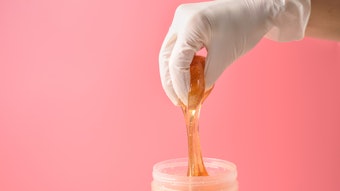
Clients visit the spa not only for skin care treatments, but for relaxation. What types of relaxation techniques can spas use, and what are the effectiveness and safety of these techniques? Sit back and relax because the National Center for Complementary and Integrative Health (NCCIH) has put together a comprehensive guide to answer these types of questions and more that you can share with your clients.
What Are Relaxation Techniques?
Relaxation techniques include a number of practices such as progressive relaxation, guided imagery, biofeedback, self-hypnosis and deep breathing exercizes. The goal is similar in all: to produce the body's natural relaxation response, characterized by slower breathing, lower blood pressure and a feeling of increased well-being. Meditation and practices that include meditation with movement, such as yoga and tai chi, can also promote relaxation. Relaxation techniques include:
- Autogenic Training—In autogenic training, you learn to concentrate on the physical sensations of warmth, heaviness, and relaxation in different parts of your body.
- Biofeedback-Assisted Relaxation—Biofeedback techniques measure body functions and give you information about them so that you can learn to control them. Biofeedback-assisted relaxation uses electronic devices to teach you to produce changes in your body that are associated with relaxation, such as reduced muscle tension.
- Deep Breathing or Breathing Exercises—This technique involves focusing on taking slow, deep, even breaths.
- Guided Imagery—For this technique, people are taught to focus on pleasant images to replace negative or stressful feelings. Guided imagery may be self-directed or led by a practitioner or a recording.
- Progressive Relaxation—This technique, also called Jacobson relaxation or progressive muscle relaxation, involves tightening and relaxing various muscle groups. Progressive relaxation is often combined with guided imagery and breathing exercises.
- Self-Hypnosis—In self-hypnosis programs, people are taught to produce the relaxation response when prompted by a phrase or nonverbal cue (called a “suggestion”).
Are Relaxation Techniques Effective?
Relaxation techniques may be helpful in managing a variety of health conditions, including anxiety associated with illnesses or medical procedures, insomnia, labor pain, chemotherapy-induced nausea, and temporomandibular joint dysfunction (TMJ). Psychological therapies, which may include relaxation techniques, can help manage chronic headaches and other types of chronic pain in children and adolescents.
Safety and Side Effects
-
Relaxation techniques are generally considered safe for healthy people. However, occasionally, people report unpleasant experiences such as increased anxiety, intrusive thoughts, or fear of losing control.
-
There have been rare reports that certain relaxation techniques might cause or worsen symptoms in people with epilepsy or certain psychiatric conditions, or with a history of abuse or trauma. People with heart disease should talk to their health care provider before doing progressive muscle relaxation.
To read the full version of the report, visit https://nccih.nih.gov/health/stress/relaxation.htm










